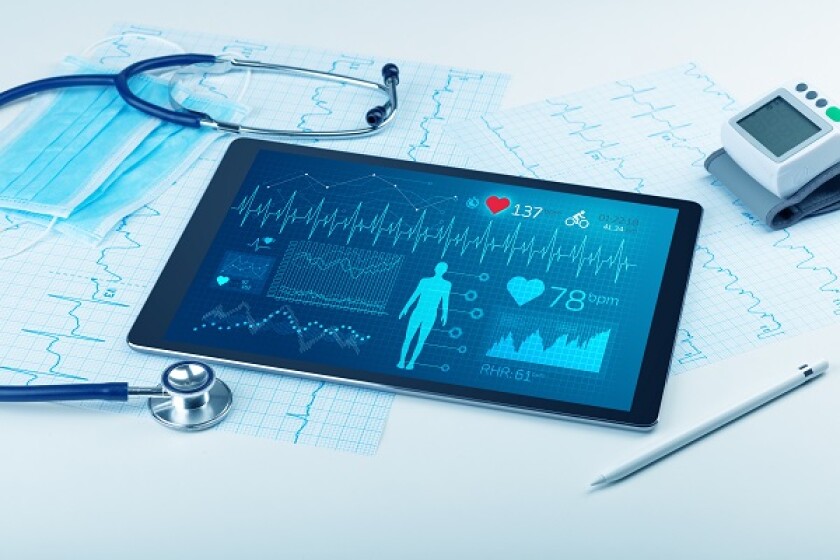Track and trace smartphone applications used in the fight against COVID-19 are representative of a relatively new industry falling between the healthcare, IT, medical devices and pharmaceutical sectors.
Digital health addresses health issues faced by patients and their healthcare providers. It includes health and wellness applications, wearable technologies, mobile health, telehealth, medical imaging, electronic medical records, robotic surgery, personal genomics and diagnostics.
Traditionally conservative healthcare and pharmaceutical companies are joining forces with cutting-edge digital technology companies, to keep pace with the industry’s shift. This change does not come without challenges including the below.
Privacy issues regarding the use of patient data require digital health companies to comply with laws for protecting or de-identifying protected health information (PHI) in the countries where the PHI is gathered or used.
Robust cybersecurity systems must be deployed by digital health companies to protect against breaches of users’ PHI and other valuable information.
Ownership of IP generated through collaboration is something that should be carefully considered from the outset and the appropriate agreements and procedures must be implemented to avoid issues later.
Product life cycles for digital health innovations are typically much shorter than those for healthcare products and this requires a different lens when considering cost effective IP protection.
IP protection available for digital health technologies
Patents
Digital health products often encompass several distinct technologies – software, hardware (sensors), telemetry and diagnostic tools and can be used to assist in a method of treatment or diagnosis. Some of these technologies should be relatively easy to protect by a patent. However, in some jurisdictions (including Australia and Europe), protecting abstract ideas, software and computer-implemented technologies may be difficult – unless they provide real-life outcomes. Similarly protecting methods of treatment or diagnosis can be difficult in some jurisdictions, particularly the US.
In the same way that researchers and innovators have teamed-up across historical “technological divides” to produce innovation in digital health, the best IP protection outcomes are achieved by multidisciplinary patent teams.
In many jurisdictions the time taken to obtain patent protection often makes them unattractive to the digital health environment of rapid innovation and quick turnover. In Australia, while there is no official fee to accelerate patent examination, a patent may be granted relatively quickly and cheaply. It can then be used to accelerate patent examination in other key jurisdictions through the patent prosecution highway (PPH).
Another option might be second-tier patent protection, such as innovation patents available in Australia (until they are phased out from August 2021). These are easier to obtain than standard patents (albeit with shorter term) but have the same remedies for infringement. While they are limited to just five claims, each can be independent. Despite having the same requirements as standard patents for subject matter eligibility, they are good for protecting incremental improvements as they only need an “innovative” and not an “inventive” step.
Design rights
Although design rights protect a product’s shape or appearance (and not its function), aspects of a digital health device’s appearance are often a key factor in consumer uptake. Design rights should therefore hold a key place in the IP portfolio of a digital health company.
Copyright
Digital health devices, particularly apps, can collect and store data for use by healthcare professionals. If the data is stored in a database, the database may be protected under copyright. Facts and data per se are not protected by copyright but a collection of data or a database may be protected if it is sufficiently original. Copyright may also exist in algorithms and software code used by a digital health device.
Trademarks
The brand(s) associated with a digital health product can sometimes make that product more appealing to the purchaser and in these circumstances, trademark protection is important.
Trade secrets
Some IP generated by digital health companies may benefit from trade secret protection. Trade secrets may be used to protect data, algorithms and processes provided they can be kept confidential.
Given some of the issues with obtaining patent protection for certain aspects of digital health products, trade secrets are being used increasingly to protect digital health innovation. Unfortunately, trade secrets can be much harder to enforce than more traditional IP forms like patents.
The rapid evolution of technology in the digital space may mean that companies choose to move forward without formal IP protection, focusing instead on staying ahead of the technology curve. However, for early-stage companies seeking investment, patent protection might be preferable as a trade secret’s value is often more difficult to quantify.
The digital health landscape presents various challenges for protecting innovations due to the differing technologies they can encompass. Consequently, digital health companies should adopt a flexible approach to IP protection and consider all the options available. For further information please contact your IP specialist at Griffith Hack.











